Похожие презентации:
Story board
1.
ACKNOWLEDGEMENTOF COUNTRY
2.
This session has been funded through the NSWDepartment of Education’s Sector Development Program
3. CELA IMAGES
4.
RESOURCES5.
6. THE NQF INCLUDES
The NQF includes:The National Law and Regulations
National Quality Standard
Assessment and Quality Rating Process
National Learning Frameworks
7. NATIONAL QUALITY STANDARD 7 QUALITY AREAS
QA1Educational program and practice
QA2
Children’s health and safety
QA3
Physical environment
QA4
Staffing arrangements
QA5
Relationships with children
QA6
Collaborative partnerships with families and communities
QA7
Governance and leadership
8. NATIONAL QUALITY STANDARD 15 STANDARDS
QA1QA2
QA3
QA4
• Program
• Practice
• Assessment &
Planning
• Health
• Safety
• Design
• Use
• Staffing
arrangements
• Professionalism
QA5
QA6
QA7
• Relationships
between educators
and children
• Relationships
between children
• Supportive
relationships with
families
• Collaborative
partnerships
• Governance
• Leadership
9.
PREPARING FOR ASSESSMENT AND RATINGSELF ASSESSMENT
10.
Evaluatetheir current practices through self-assessment
against the National Quality Standard
Identify
key practices that meet the benchmark of quality
under the NQS
Identify
evidence that supports key practices
Identify
the practices they can or should improve
11.
Need pdf of self-assessment tool12.
Need page 24 ofhandout
S
13. What the regulations say about self-assessment
Chapter 4, Part 3.1Regulation 55
The approved provider of an education and care service must ensure
that, within 3 months of the grant of the service approval, a quality
improvement plan is prepared for the service that—
(a) includes an assessment by the provider of the quality of the
practices of the service against the National Quality Standard and these
Regulations; and
(b) identifies any areas that the provider considers may require
improvement
14. SELF ASSESSMENT
7.2.1 There is an effective self assessmentand Quality Improvement Plan in place
15. Example of Self assessment tool – change the heading to evidence of compliance
16. SELF ASSESSMENT PROCESS
1. SERVICEPHILOSOPHY
5. REVIEW
AND REFLECT
2. SELF-ASSESS
SELF-ASSESSMENT
IS A CONTINUOUS
PROCESS
QIP CYCLE
4. QIP
3. IDENTIFY
STRENGTHS &
AREAS FOR
IMPROVEMENT
Source: ACECQA Self Assessment Tool
17.
PREPARING FOR ASSESSMENT AND RATINGPHILOSOPHY
18. SERVICE PHILOSOPHY
Element 7.1.1: A Statement of Philosophy guides allaspects of the service’s operations
19. MAKING THE PHILOSOPHY VISIBLE
Special thanks to Condobolin ELC for the photos of practice20.
21. SELF ASSESSMENT PROCESS
1. SERVICEPHILOSOPHY
5. REVIEW
AND REFLECT
2. SELF-ASSESS
SELF-ASSESSMENT
IS A CONTINUOUS
PROCESS
QIP CYCLE
4. QIP
3. IDENTIFY
STRENGTHS &
AREAS FOR
IMPROVEMENT
Source: ACECQA Self Assessment Tool
22. SUMMARY OF THE QIP – THE STEPS
DEVELOP THE QIPIDENTIFY AREAS FOR
IMPROVEMENT
SELF ASSESSMENT
of the quality
practices of the
service against the
NQS and National
Law and Regulations
IDENTIFY
STRENGTHS OR KEY
PRACTICES
identify areas that
may need
improvement
in each Quality Area
Adapted from National Quality Standard and Assessment and Rating| Assessment and Rating Process p316
23.
PREPARING FOR ASSESSMENT AND RATINGARTICULATING PRACTICE:
Know what you do and why you do it!
24. Talking about the why of what you do – the 5 step approach
1Connect practice to
philosophy
2
Support practice with
research
3
Connect practice with
the National Quality
Standard
4
Connect practice with
the approved learning
framework
5
Connect practice with
the relevant ECA Code
of Ethics/UN Convention
on the Rights of the
Child
©JR Education Consulting
25. Talking about the why of what you do – the 5 step approach
1Connect practice to
philosophy
2
Support practice with
research
3
Connect practice with
the National Quality
Standard
4
Connect practice with
the approved learning
framework
5
Connect practice with
the relevant ECA Code
of Ethics/UN Convention
on the Rights of the
Child
©JR Education Consulting
26. STEP 1 CONNECT PRACTICE TO PHILOSOPHY
CONNECT PRACTICE TO PHILOSOPHYIt is our belief that children are unique and have
rights.
This includes the right to have a voice , the
freedom to express themselves and learn
through play in inclusive and sustainable
environment.
27. STEP 2 SUPPORT PRACTICE WITH RESEARCH
SUPPORT PRACTICE WITHRESEARCH
‘Mental health professionals also argue that the
lack of risk in play can lead to a lack of resilience
and ultimately mental health issues’
Sandsetter, Ellen Beate Hansen (2009)
28. STEP 3 CONNECT PRACTICE WITH THE NQS
CONNECT PRACTICE WITH THENATIONAL QUALITY STANDARD
QA 3 PHYSICAL ENVIRONMENT
3.2 .1 OUTDOOR AND INDOOR SPACES ARE ORGANISED AND ADAPTED TO SUPPORT
EVERY CHILD’S PARTICIPATION AND TO ENGAGE EVERY CHILD IN QUALITY
EXPERIENCES IN BOTH BUILT AND NATURAL ENVIRONMENTS.
Authorised officers may observe:
challenging elements of outdoor and indoor environments that allow for
experiences that scaffold children’s learning and development and offer
opportunities for appropriate risk taking and risky play.
29. STEP 4 CONNECT PRACTICE TO THE APPROVED LEARNING FRAMEWORKS
CONNECT PRACTICE TO THEAPPROVED LEARNING FRAMEWORK
Learning through play
Play provides opportunities for children to learn as they
discover, create, improvise and imagine. When children play
with other children they create social groups, test out ideas,
challenge each other’s thinking and build new understandings.
30. STEP 5 CONNECT PRACTICE WITH THE RELEVANT CODE OF ETHICS/ PROFESSIONAL STANDARDS
CONNECT PRACTICE WITH THE RELEVANT CODEOF ETHICS/PROFESSIONAL STANDARDS
In relation to children I will:
Respect children as capable learners by including
their perspectives in teaching, learning and
assessment
The 5 step approach to Quality used with permission JR Education Consulting
31.
PREPARING FOR ASSESSMENT AND RATINGEXCEEDING THEMES
32.
Need graphic on how exceeding isdetermined
33. HOW DO WE ACHIEVE EXCEEDING?
There are three themes that need to be demonstrated in practice in orderfor a service to achieve a rating of exceeding for any standard
1.
2.
3.
Practice is embedded in service operations
Practice is informed by critical reflection
Practice is shaped by meaningful engagement with families/ and
or the community
34. EXCEEDING THEME 1: Practice is embedded in service operations
35.
Practice alignswith philosophy
Practice aligns to the
Principals and
practices of the
learning frameworks
Practice aligns
with policies
and procedures
Able to link
practice to
the NQS
36. EXCEEDING THEME 2: Practice is informed by critical reflection
37. EDUCATORS WHO CRITICALLY REFLECT
Open to differentviews and opinions
and open to new
possibilities
Consider the social
justice and equity
implications of your
practice
Aware that your
decisions are
informed by research
Ensure your personal
values don’t
overshadow the
rights of the child
38.
WHAT?NOW
WHAT?
SO
WHAT?
Rolfe et al
39. HOW IS CRITICAL REFLECTION DEMONSTRATED?
Is there evidence of critical reflection in the service?How frequently does this occur? Daily? Weekly? Monthly
Could you demonstrate critical reflection on the day of assessment
and rating?
Do you document critical reflection?
40. EXCEEDING THEME 3: Practice is shaped by meaningful engagement with families/ and or the community
41.
42.
PREPARING FOR ASSESSMENT AND RATINGCOMMUNICATING WHAT ‘QUALITY’ IS TO
FAMILIES
43. Need colour picture or picture of group of children
44. WHAT DOES EXCEEDING MEAN
https://www.acecqa.gov.au/sites/default/files/201801/NationalQualityFrameworkPoster_0.pdf45.
PREPARING FOR ASSESSMENT AND RATINGTHE VISIT
46.
47.
Preassessment48.
The visit49.
THE DRAFT REPORT50.
DRAFT REPORT AND FEEDBACK ON THE DRAFTREPORT





















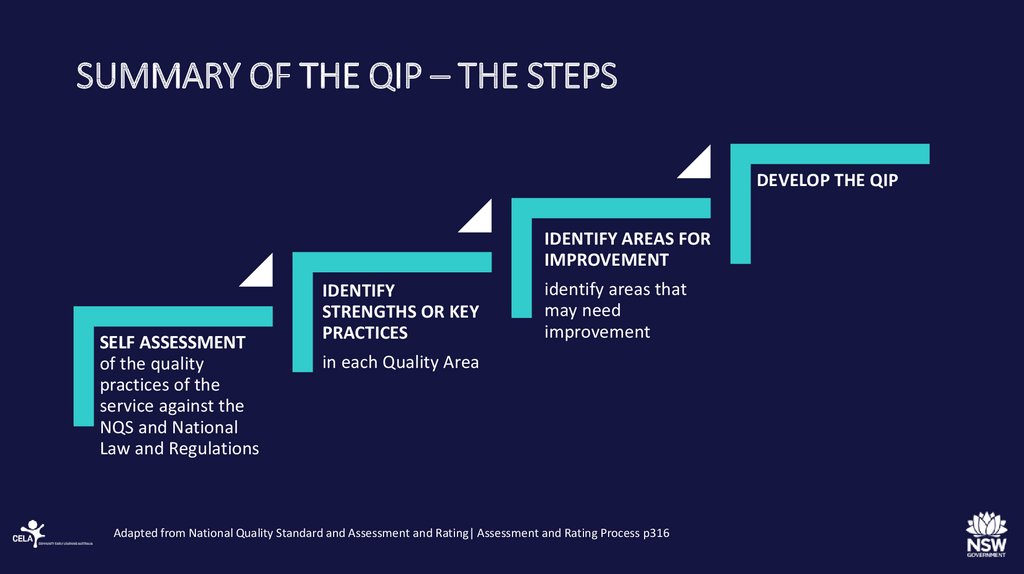

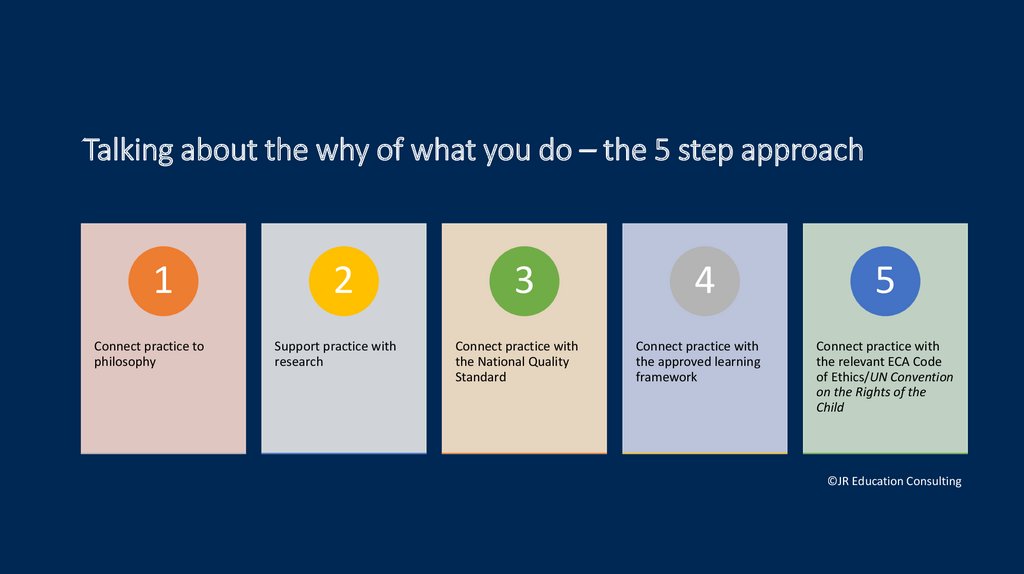
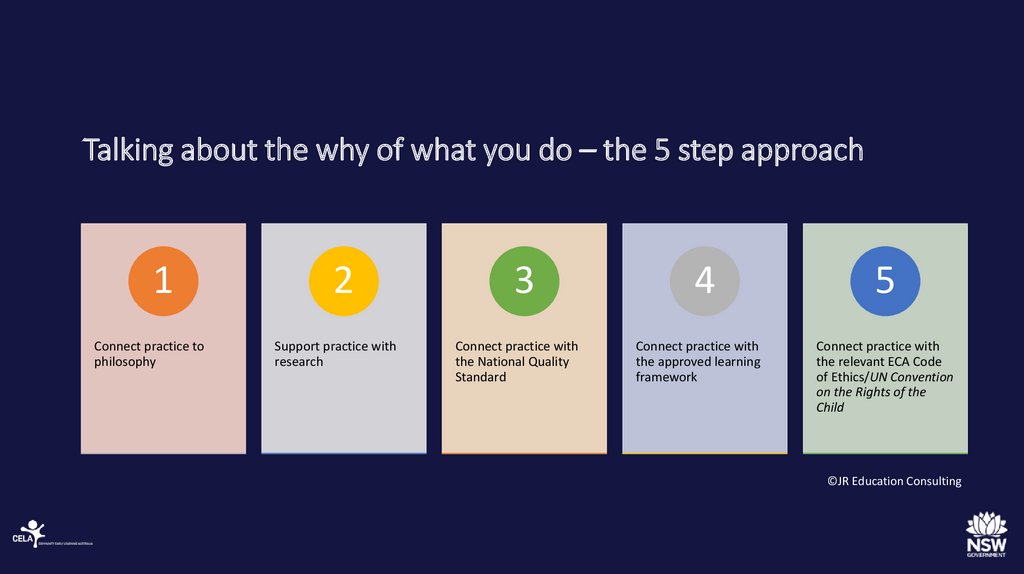
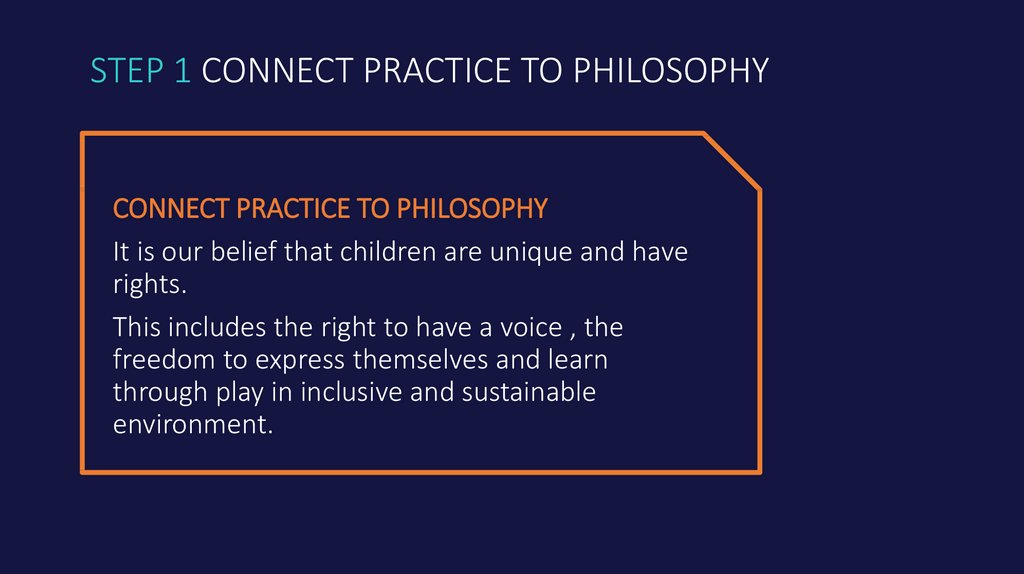
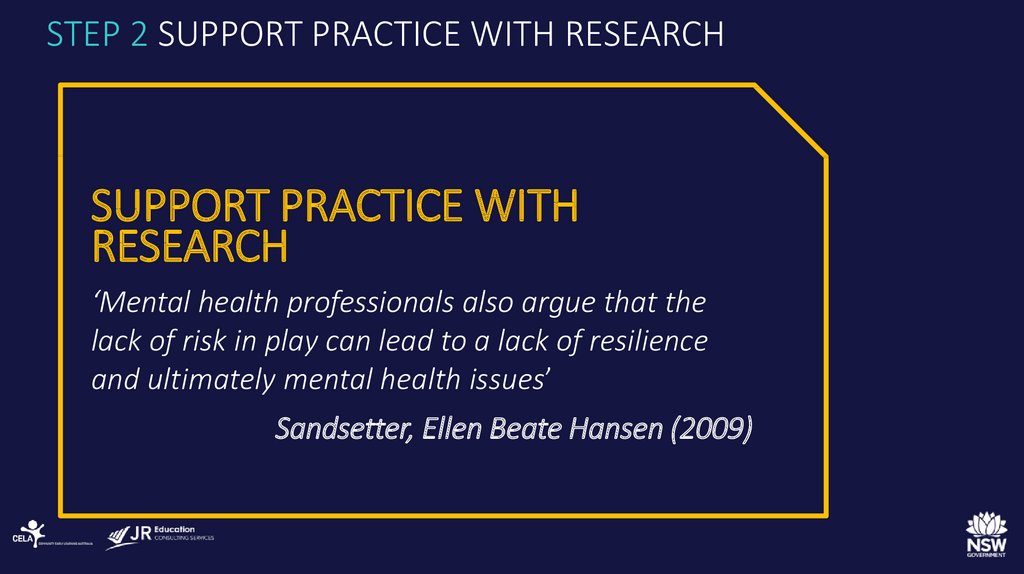
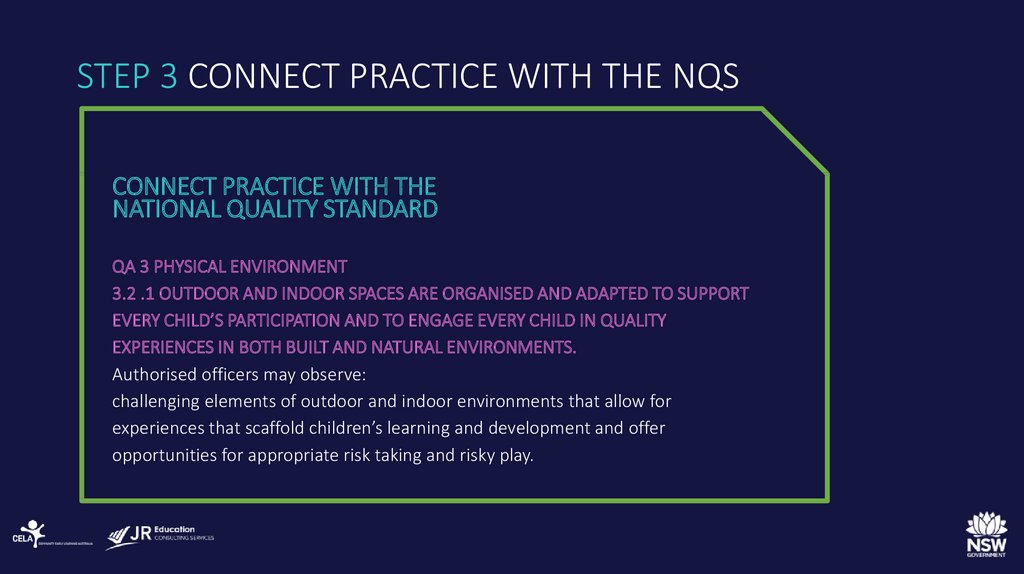
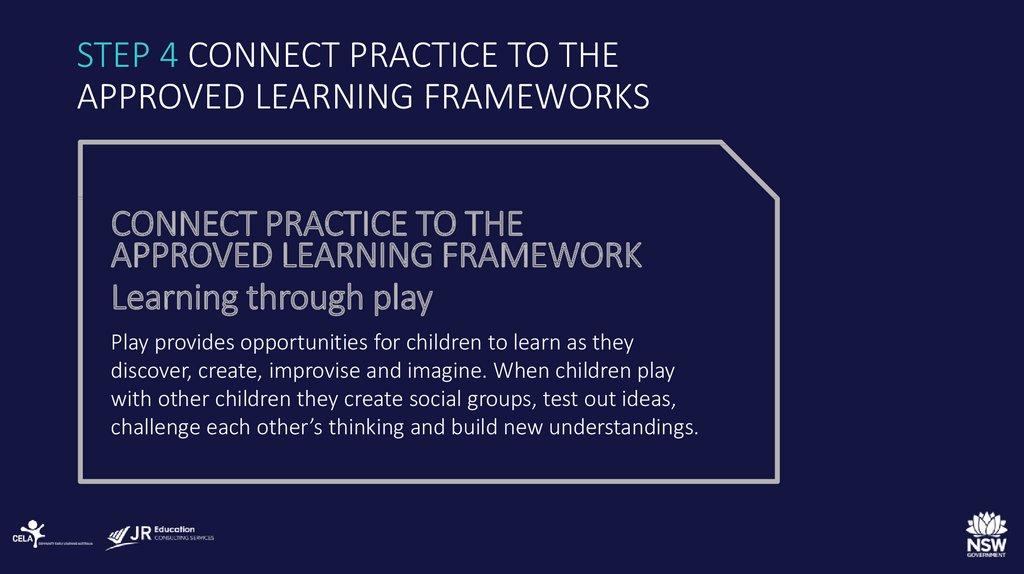
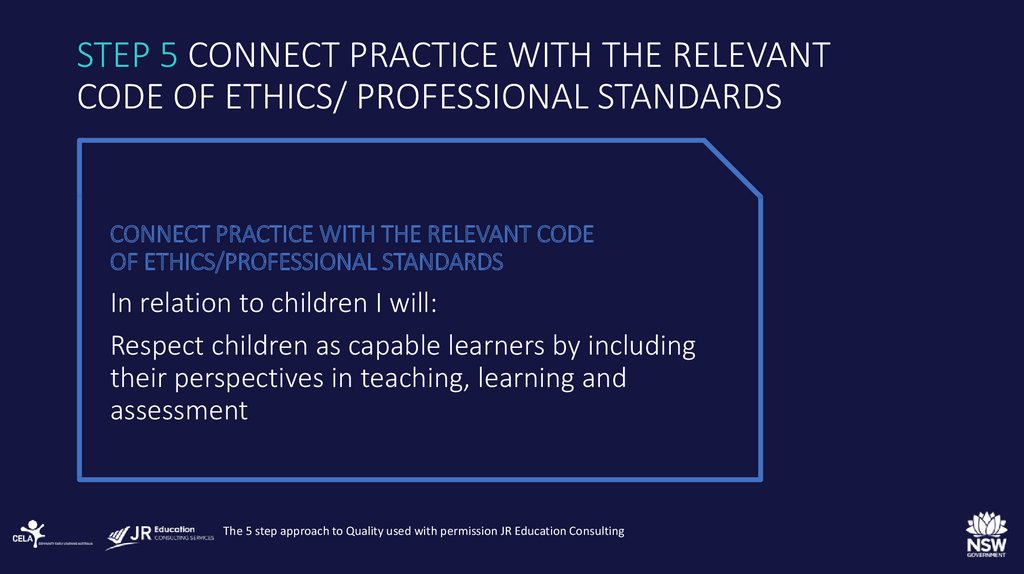
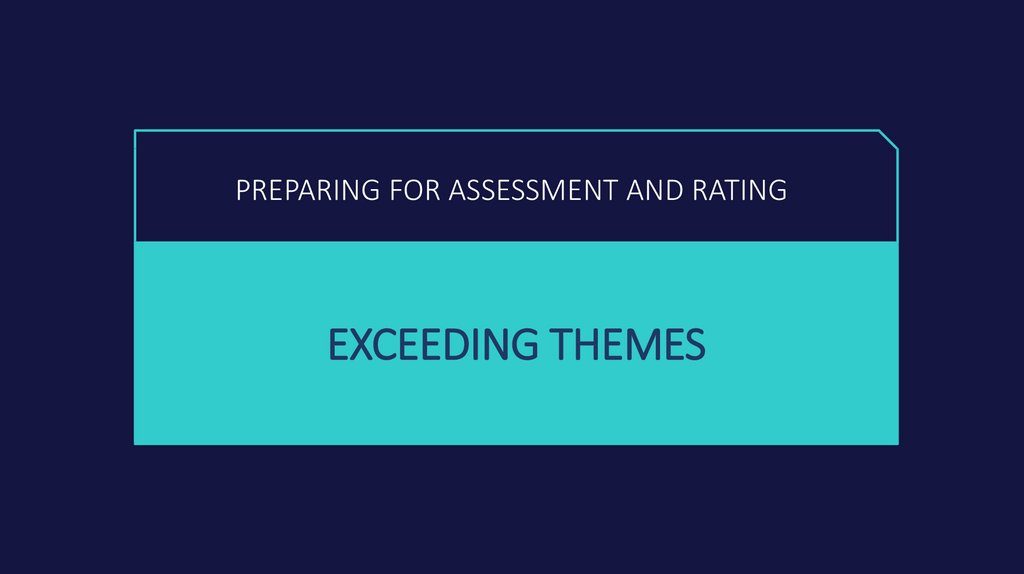
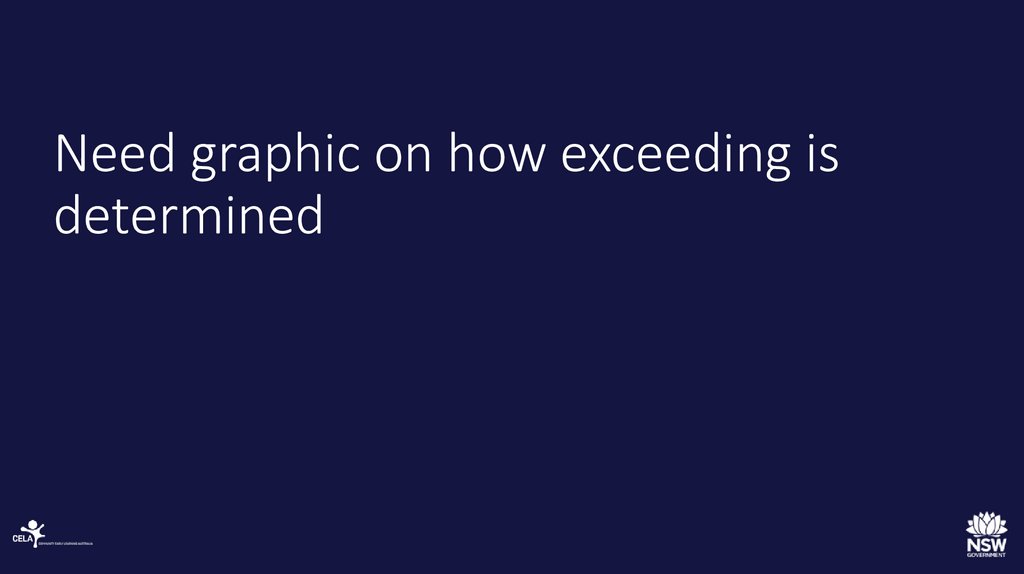
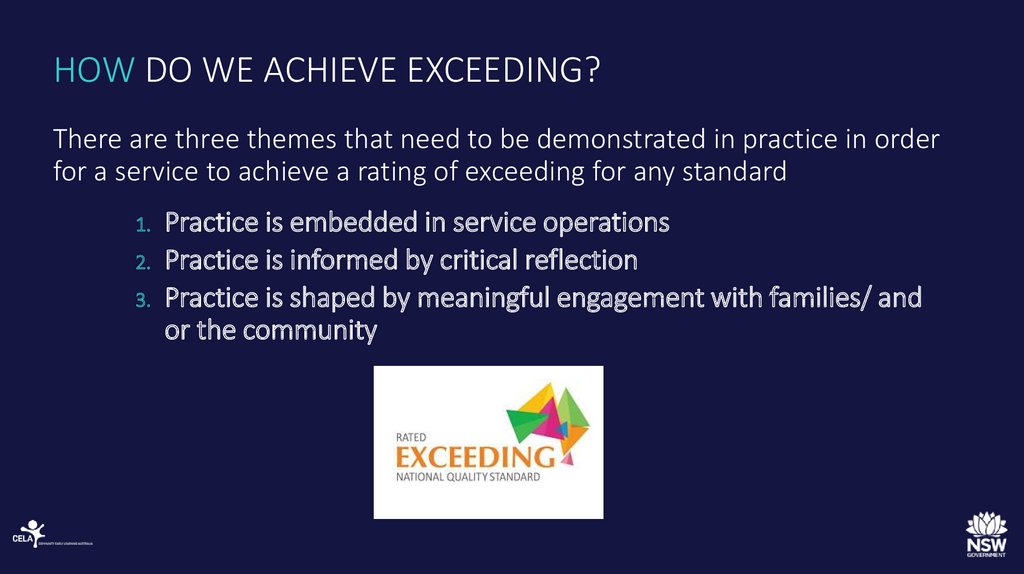
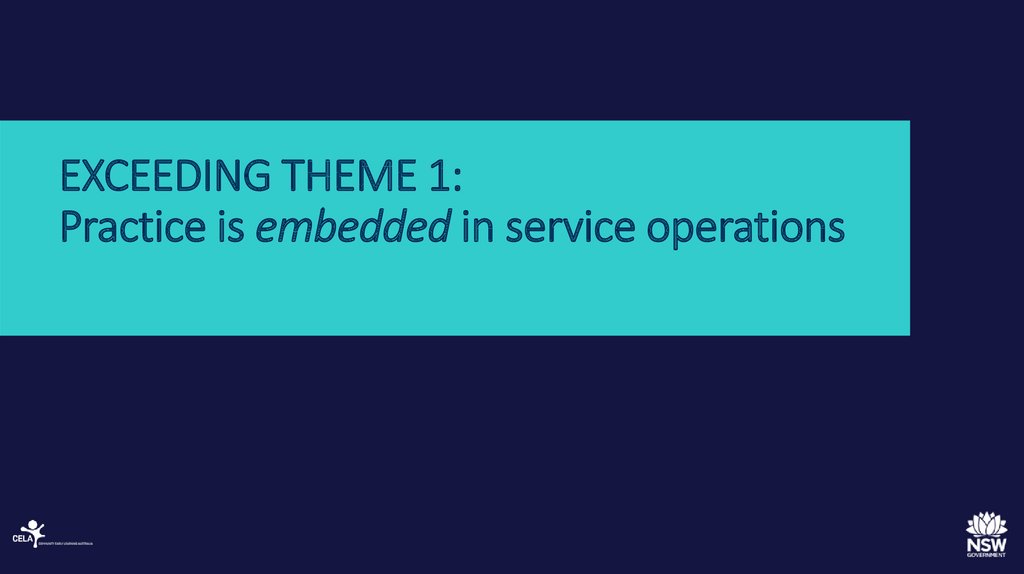

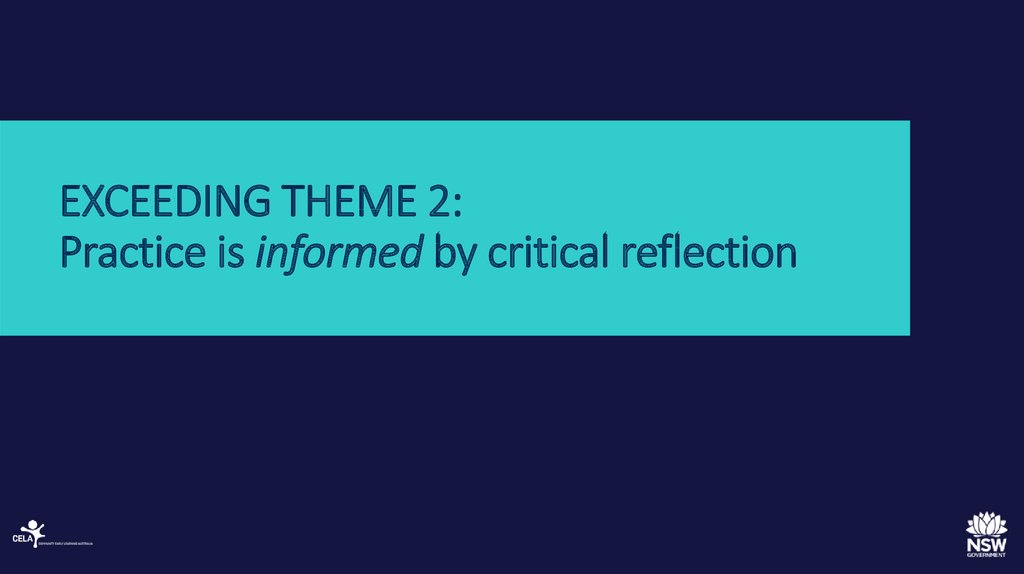
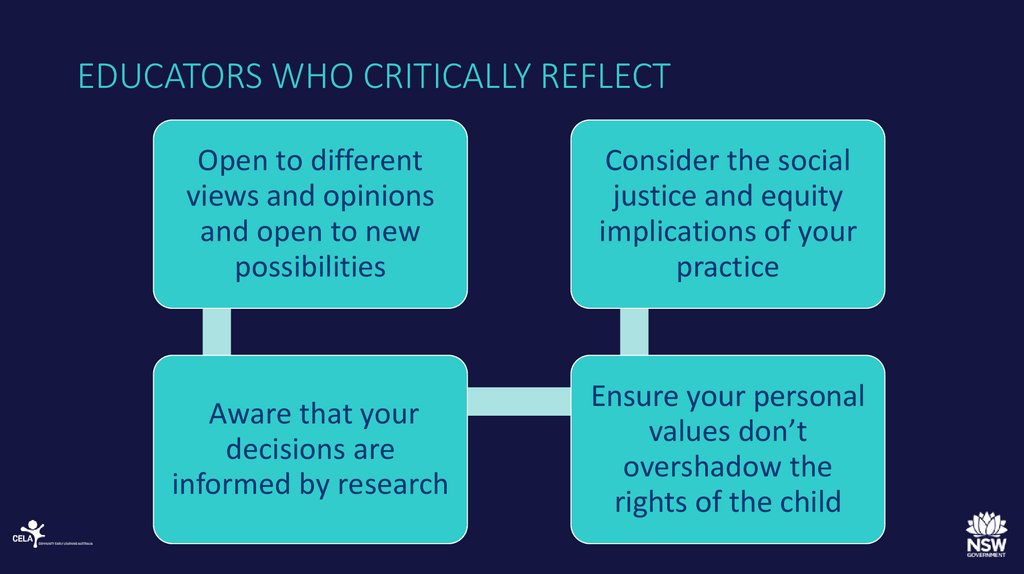
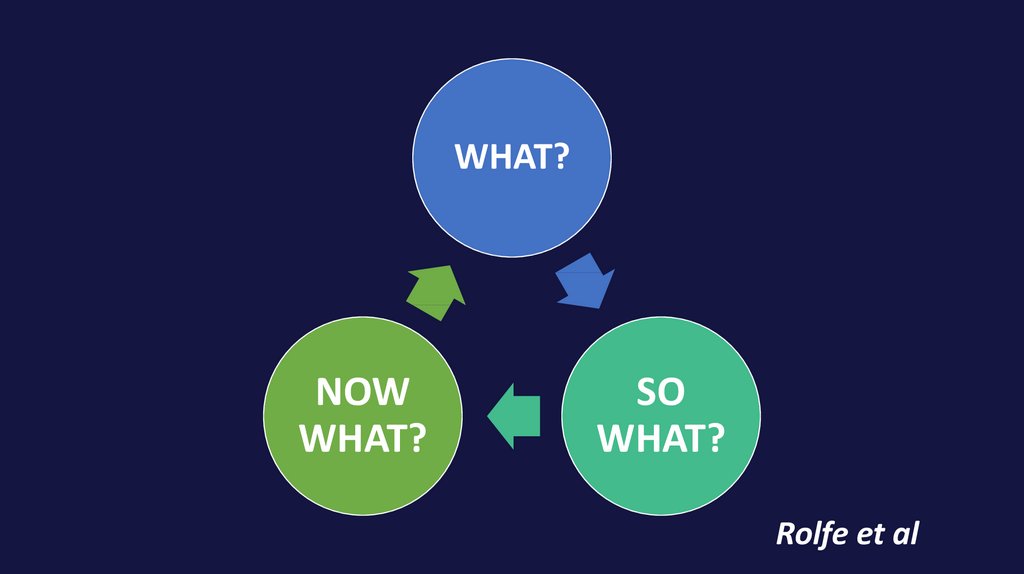
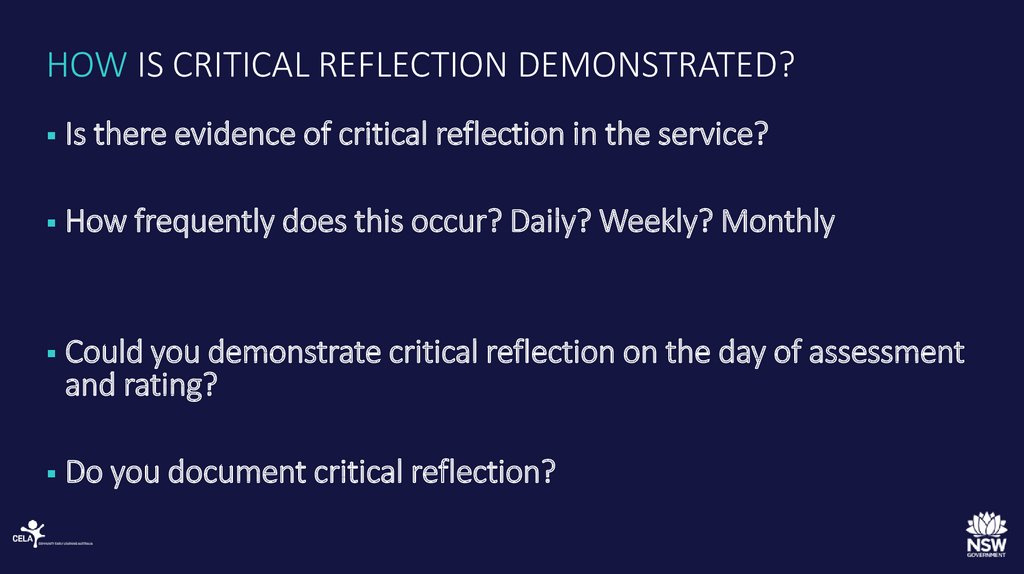
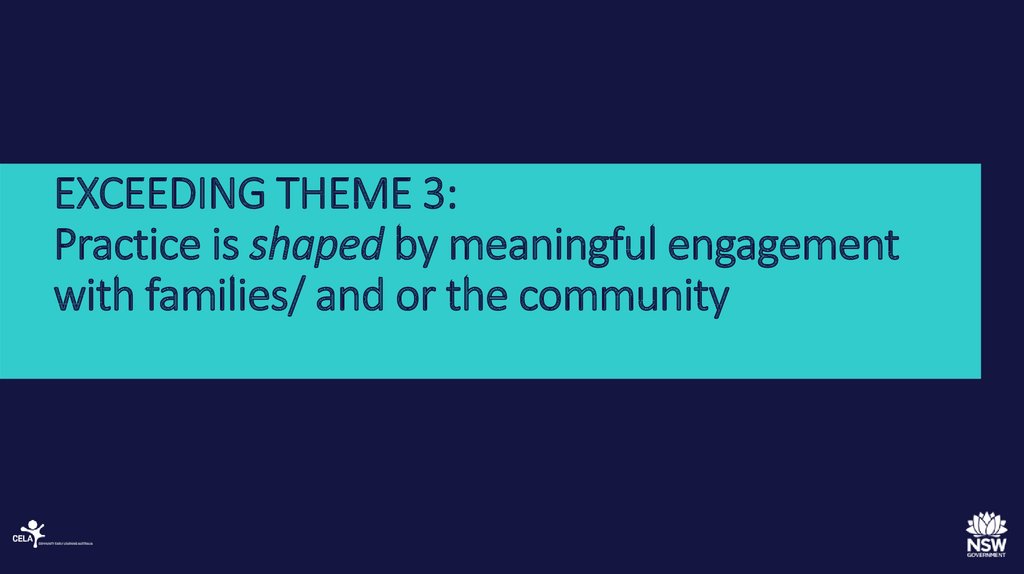
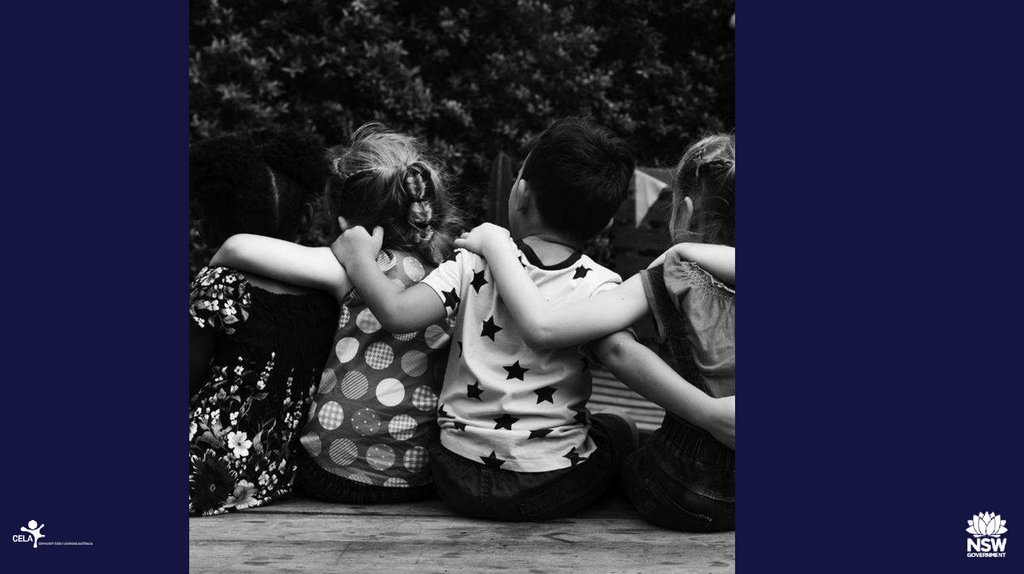
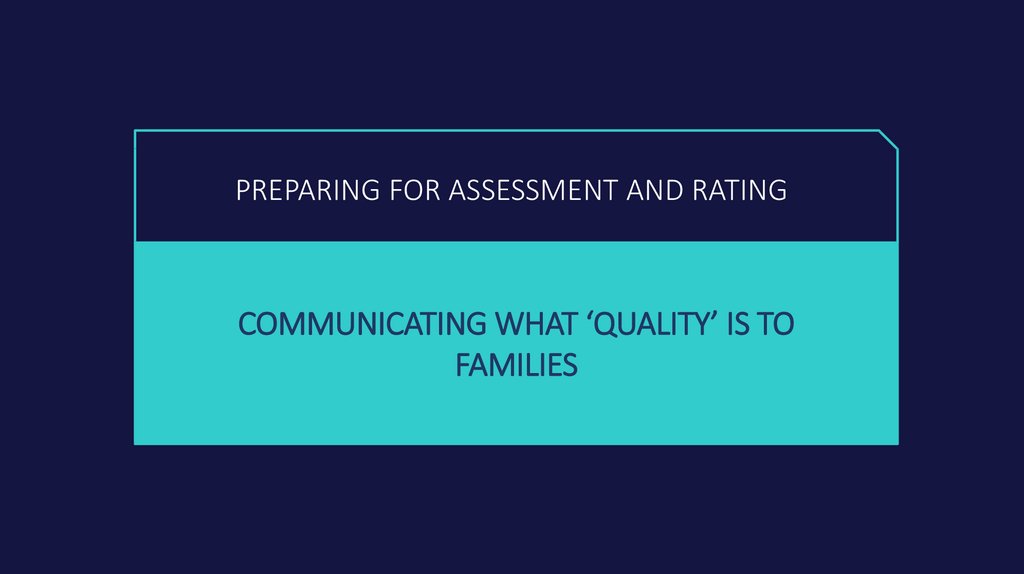

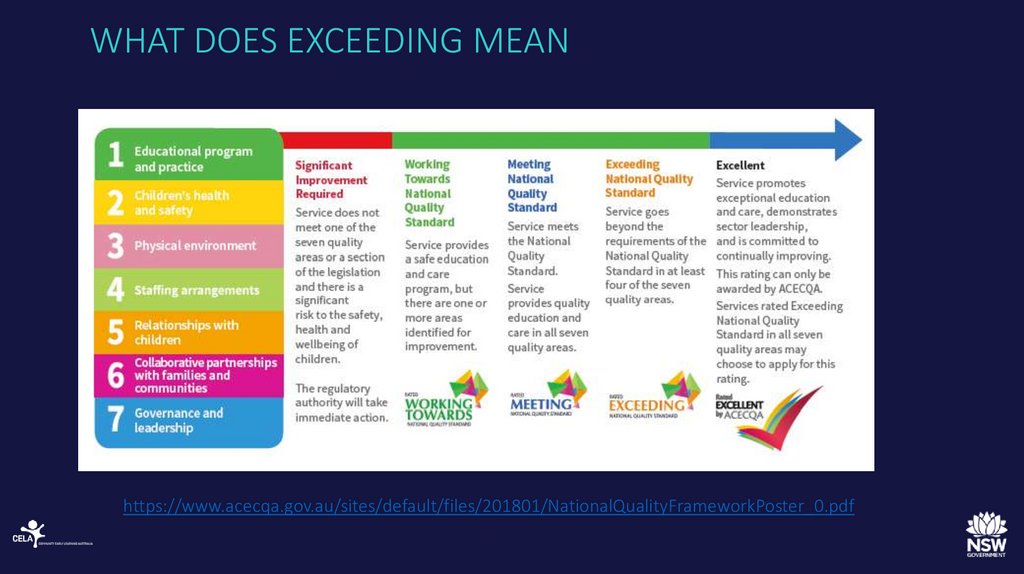
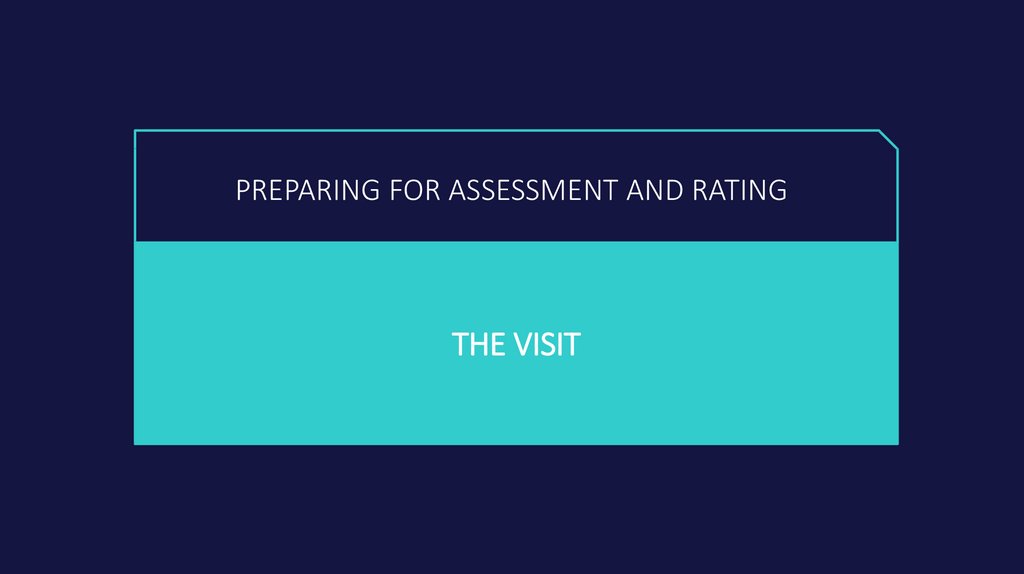







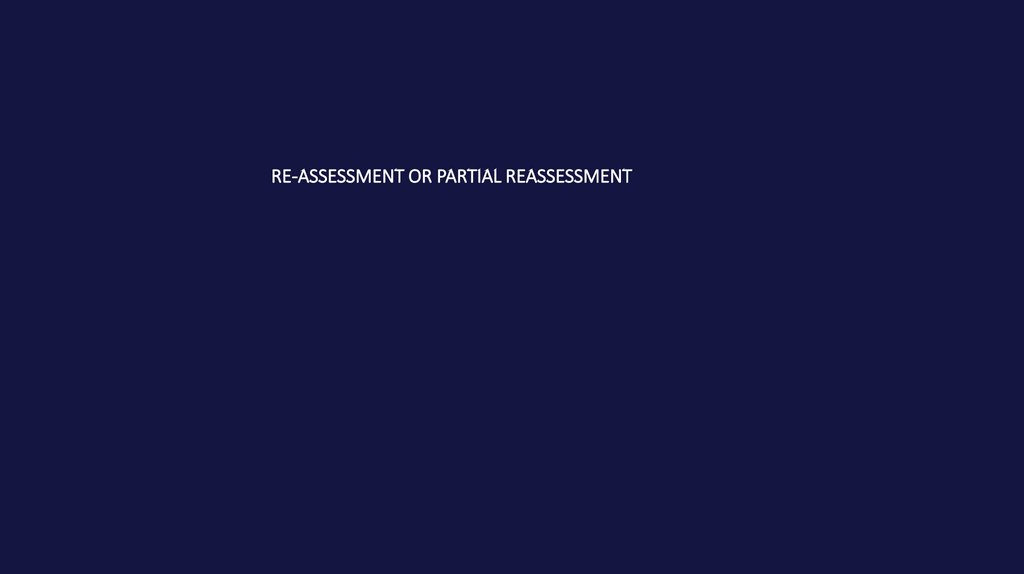
 Образование
Образование








